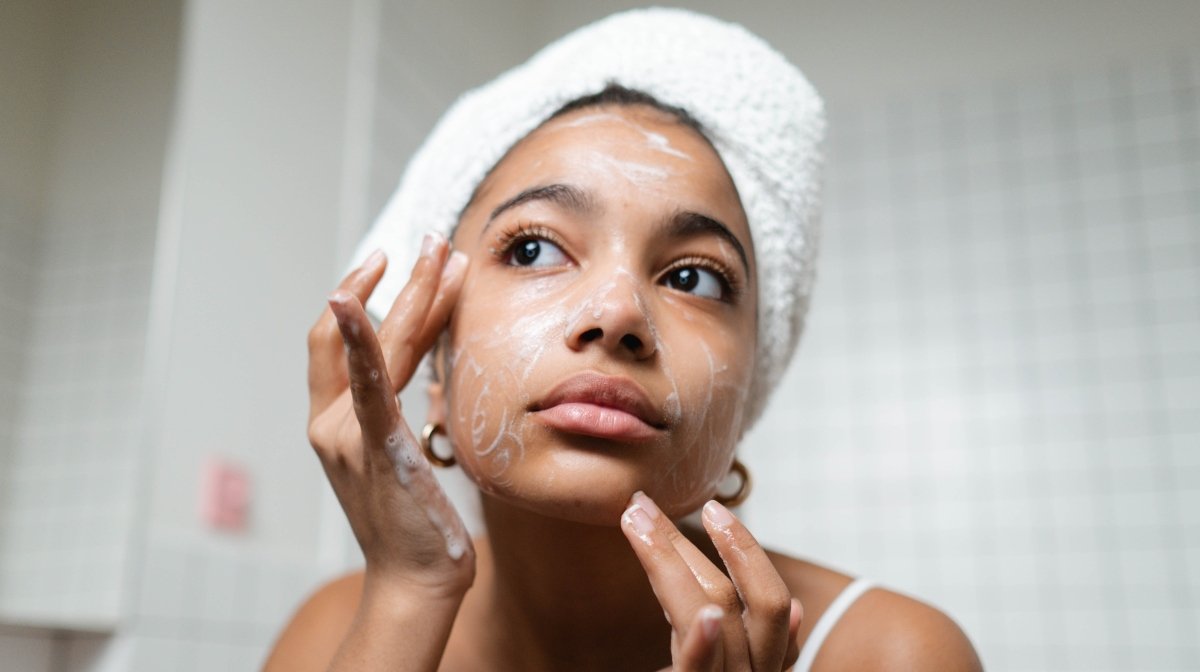Introduction
Having a skincare routine is crucial for maintaining healthy and glowing skin. A proper skincare routine not only helps to improve the condition of your skin, but it also acts as a therapeutic self-care practice that allows you to pamper yourself. However, with the overwhelming number of skincare products and routines available, it can be challenging to know where to start.
In this comprehensive guide, we will take you through the steps of creating an effective skincare routine that caters to your unique skin type and concerns. Whether you are a skincare novice or a self-proclaimed skincare enthusiast, this article will provide you with the information you need to achieve your skincare goals.
So, let’s dive right in and discover how to create a skincare routine that will leave your skin looking flawless and radiant!
Step 1: Determine Your Skin Type
The first and most crucial step in creating a skincare routine is to determine your skin type. Knowing your skin type will help you choose the right products and treatments that will address your specific needs. There are five basic skin types: normal, dry, oily, combination, and sensitive.
If your skin feels balanced and does not experience excessive dryness or oiliness, you most likely have normal skin. Dry skin tends to feel tight and may appear flaky or rough. Oily skin is characterized by excess sebum production and often appears shiny or greasy. Combination skin has areas that are oily, usually in the T-zone (forehead, nose, and chin), and areas that are dry or normal. Sensitive skin is easily irritated, and it may react to certain ingredients or environmental factors.
Once you have determined your skin type, you can proceed to choose products that specifically cater to your needs. Let’s explore the next step in creating a skincare routine.
Step 2: Cleanse Your Skin
Cleansing is an essential step in any skincare routine as it removes dirt, oil, and impurities that have accumulated on the skin’s surface. Start by choosing a gentle cleanser that suits your skin type. For dry or sensitive skin, opt for a creamy or hydrating cleanser that won’t strip away natural oils. If you have oily or acne-prone skin, a gel or foaming cleanser can help to remove excess oil and unclog pores.
To cleanse your skin, dampen your face with lukewarm water and apply a small amount of cleanser. Massage it gently into your skin using circular motions, paying extra attention to areas that are prone to congestion or makeup residue, such as the T-zone. Rinse thoroughly with water and pat your face dry with a clean towel.
Step 3: Exfoliate for a Fresh Glow
Exfoliation is a crucial step in any skincare routine as it helps to slough off dead skin cells and reveal a fresh, radiant complexion. Regular exfoliation can also enhance the absorption of other skincare products and improve the overall texture of your skin.
There are two types of exfoliation: physical and chemical. Physical exfoliators involve the use of granules or brushes to manually remove dead skin cells. Chemical exfoliators, on the other hand, contain enzymes or acids that dissolve the bonds between dead skin cells.
When choosing an exfoliator, consider your skin type and sensitivity. If you have sensitive skin, opt for a chemical exfoliator with mild ingredients like fruit enzymes or lactic acid. For oily or acne-prone skin, a salicylic acid-based exfoliator can help to unclog pores and reduce breakouts. It’s important not to over-exfoliate, as this can irritate your skin and disrupt its natural barrier.
Step 4: Treat Your Skin with Serums
Serums are concentrated formulations packed with active ingredients that target specific skincare concerns such as fine lines, dark spots, or dullness. These potent products have a lightweight texture, allowing them to penetrate deeper into the skin and deliver targeted benefits.
When selecting a serum, consider your primary skincare concerns and choose one that addresses those issues. For example, if you are concerned about maintaining youthful-looking skin, opt for a serum containing antioxidants like vitamin C or retinol. If hydration is your main concern, look for serums with hyaluronic acid or ceramides.
To apply a serum, cleanse your skin and pat it dry. Take a few drops of the serum and gently massage it into your face and neck using upward motions. Allow the serum to absorb fully before proceeding to the next step of your skincare routine.
Step 5: Moisturize for Hydration
Moisturizing is a vital step that helps to hydrate and nourish the skin. Regardless of your skin type, finding the right moisturizer is essential to maintain a healthy moisture balance and prevent dryness or oiliness.
For dry or mature skin, opt for a rich and creamy moisturizer that provides long-lasting hydration. Ingredients like shea butter, glycerin, or ceramides provide the necessary moisture barrier for your skin. Oily or acne-prone skin types should choose a lightweight, oil-free moisturizer that won’t clog pores or contribute to excess oil production. Gel or water-based moisturizers are ideal for these skin types.
After cleansing and applying your serum, take a pea-sized amount of moisturizer and gently massage it into your face and neck. Pay attention to any areas that need extra hydration, such as dry patches or areas prone to fine lines.
FAQs
Q: How often should I exfoliate my skin?
A: The frequency of exfoliation depends on your skin type and the type of exfoliator you are using. Generally, it is recommended to exfoliate 1-2 times per week. However, if you have sensitive skin or are using a strong exfoliator, it is best to exfoliate less frequently to avoid irritation.
Q: When should I apply sunscreen in my skincare routine?
A: Sunscreen should be the last step in your skincare routine, applied after moisturizer and before makeup (if applicable). This ensures that your skin is adequately protected from harmful UV rays throughout the day.
Q: Can I skip moisturizer if I have oily skin?
A: No, moisturizer is essential for all skin types, including oily skin. When the skin lacks moisture, it may produce more oil to compensate, leading to increased oiliness or breakouts. Opt for lightweight, oil-free moisturizers that won’t clog pores.
Q: How long does it take to see results from a skincare routine?
A: The time it takes to see results from a skincare routine varies depending on several factors, including the specific products used, your skin type, and the individual’s adherence to the routine. Generally, it may take a few weeks to a few months to see noticeable improvements in your skin.
Q: Can I mix different brands of skincare products?
A: Yes, you can mix and match skincare products from different brands as long as they are suitable for your skin type and don’t contain ingredients that are known to interact negatively. It’s important to patch test new products before applying them to your entire face to check for any potential adverse reactions.
Conclusion
Creating a skincare routine that caters to your unique skin needs is a rewarding journey that can lead to healthier, more radiant skin. By determining your skin type, cleansing, exfoliating, treating, and moisturizing, you can achieve the skin of your dreams.
Remember to choose products that are suitable for your skin type and concerns, and always listen to your skin’s needs. Consistency is key when it comes to skincare, so make sure to follow your routine diligently. With time and patience, you will be on your way to achieving a glowing complexion and a newfound confidence!







Leave a Comment